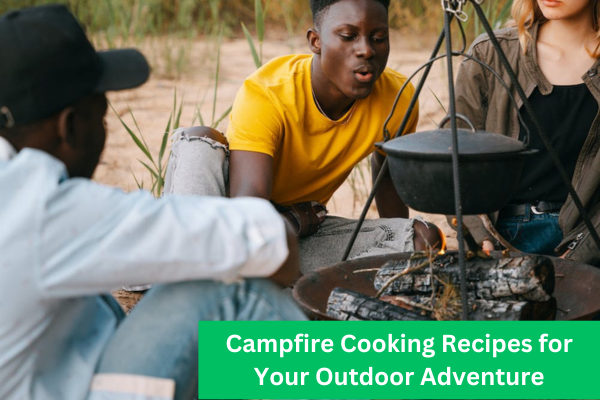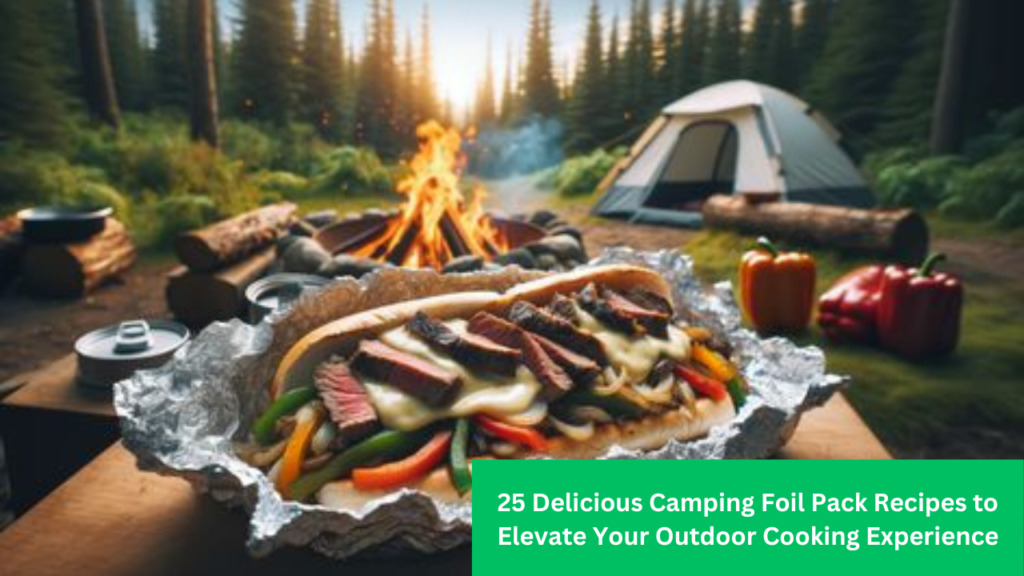How to Choose a Camping Stove

Choosing the right camping stove is essential for ensuring you can prepare meals and beverages efficiently during your outdoor adventures. There are several factors to consider when selecting a camping stove, including fuel type, size and weight, cooking power, ease of use, and overall suitability for your camping style. Here’s a step-by-step guide to help you choose the best camping stove for your needs
1. Pick Your Camp Stove Style
The first step in choosing a camping stove is to consider the style that best fits your camping needs. There are several types of camping stoves to choose from
Backpacking Stoves: These are compact and lightweight, designed for portability and convenience during backpacking trips. They often use canister fuels like propane or isobutane.
Freestanding Camp Stoves: Resembling a traditional kitchen stove, these larger models are ideal for car camping and cooking for larger groups. They may have multiple burners and more features like grill tops.
Integrated Stove Systems: These are all-in-one systems that include a stove, pot, and sometimes even utensils, providing a complete cooking solution in a compact package.
Choose a stove style based on your typical camping activities. Backpackers will prioritize lightweight and portable options, while car campers might prefer larger, more versatile stoves.
2. Choose the Number of Burners
Consider how many burners you’ll need based on your cooking requirements. Single-burner stoves are sufficient for solo campers or minimal cooking needs. However, if you’re cooking for a group or need more versatility in your cooking setup, opt for a stove with multiple burners. This allows you to cook multiple dishes simultaneously and speeds up meal preparation, especially important for larger groups or families.
3. Fuel Type and Capacit
Choose a stove that uses a fuel type compatible with your camping environment and preferences. Common fuel types for camping stoves include:
- Propane: Easy to find and use, suitable for most camping situations.
- Butane/Isobutane: Compact and efficient, ideal for backpacking stoves.
- White Gas: Offers high heat output and performs well in cold temperatures.
- Wood or Solid Fuel: Eco-friendly options suitable for campfires where wood is readily available.
Consider the availability of fuel during your trips and the stove’s fuel capacity, ensuring you have enough fuel for your entire camping duration without carrying excessive weight.
4.Important Features: Wind Resistance and Simmer Control
Look for stoves with features that enhance usability outdoors. Wind resistance is critical for maintaining consistent heat output in breezy conditions. Stoves with built-in wind shields or designs that are less affected by wind are preferable. Simmer control allows you to adjust the flame to a low setting for simmering or gentle cooking, important for preparing more delicate meals without burning them.
5.How Many BTUs Do You Need?
BTUs (British Thermal Units) measure the heat output of a stove. Higher BTU ratings indicate more heat and faster cooking times. When deciding on BTU requirements, consider factors like altitude (higher altitudes require more BTUs for efficient cooking), cooking vessel size, and the types of food you typically cook. For boiling water quickly, higher BTUs are beneficial, but for simmering delicate dishes, you might prefer more precise heat control over sheer power.
6. Do Weight and Size Matter to You?
The weight and size of a camping stove are crucial considerations, especially for backpackers and hikers. Backpacking stoves prioritize portability and lightweight design to minimize the burden on your pack. Look for compact stoves that fold or fit into a small carrying case. On the other hand, car campers or basecamp setups may prioritize larger stoves with more cooking capacity, where weight and size are less restrictive. Consider your typical camping style and transportation mode when evaluating the importance of weight and size. If you’re embarking on multi-day hikes, prioritize lightweight options; for stationary campsites accessible by vehicle, larger stoves may be more suitable.
7.Is Push-Button Ignition Worth It?
Push-button ignition systems on camping stoves offer convenience by eliminating the need for matches or lighters. With a simple push of a button, the stove ignites, saving time and effort, especially in adverse weather conditions. While convenient, push-button ignition systems can be more prone to malfunction compared to manual ignition methods. They often require batteries or piezo-electric systems to function, which may fail over time. If reliability and durability are paramount, opting for a stove with a manual ignition system might be preferable. However, if convenience is a priority and you don’t mind occasional maintenance, push-button ignition can significantly streamline your cooking setup.
8. Hybrids and Accessory Tops
Some camping stoves offer hybrid functionalities, incorporating grill tops, griddles, or accessory attachments for baking or simmering. These versatile stoves can expand your culinary options outdoors, allowing you to grill meats, toast bread, or bake simple desserts. Assess your cooking preferences and desired outdoor menu to determine if a hybrid stove with additional accessories aligns with your needs. While more feature-rich stoves may be bulkier, they can provide added convenience and versatility for adventurous camp chefs.
9. Camping vs. Backpacking Stoves
Distinguish between camping stoves designed for different purposes: car camping versus backpacking. Car camping stoves tend to be larger, offering multiple burners, higher BTU outputs, and increased cooking capacity suitable for larger groups. Backpacking stoves prioritize portability and efficiency, utilizing lightweight materials and compact designs. They often use canister fuels like propane or butane for convenience. When deciding between camping and backpacking stoves, consider your intended camping activities, group size, and cooking requirements. For solo or small group backpacking trips, opt for lightweight backpacking stoves; for family camping or group expeditions, choose robust camping stoves that can handle larger meal preparations.
10.Read Reviews and Compare Options
Research different stove models online and read user reviews:
- Brand Reputation: Consider reputable brands known for quality camping gear.
- User Feedback: Pay attention to user experiences and recommendations.
- Compare Prices: Evaluate cost versus features to find the best value.
Conclusion
choosing the perfect camping stove involves evaluating your preferences regarding ignition systems, weight and size considerations, stove versatility, and suitability for specific camping activities. By understanding these factors, you can select a camping stove that complements your outdoor adventures and culinary ambitions.
Camping stoves are typically larger, designed for car camping or basecamp setups where weight and size are less restrictive. They often have multiple burners and higher BTU outputs for cooking larger meals. In contrast, backpacking stoves are lightweight and compact, ideal for hikers and backpackers who prioritize portability. They use canister fuels like propane or butane and are designed to fit into a backpack for extended hikes.
Regular maintenance ensures optimal performance and longevity of your camping stove. Clean the stove after each use, removing food residue and debris. Check and replace fuel canisters as needed. Inspect ignition systems and fuel lines for wear and tear. Store the stove properly when not in use, protecting it from moisture and dirt. Refer to the manufacturer’s instructions for specific maintenance guidelines.
Camping stoves can use various fuel types, each with its own pros and cons:
- Propane: Common, easy to find, and suitable for most camping situations.
- Butane/Isobutane: Compact and efficient, ideal for backpacking stoves.
- White Gas: Offers high heat output and performs well in cold temperatures.
- Wood/Solid Fuel: Eco-friendly options suitable for campfires where wood is readily available.
Choose a fuel type based on availability, convenience, and compatibility with your stove’s design.
BTU stands for British Thermal Unit, which measures the heat output of a camping stove. Higher BTUs mean more heat, resulting in faster cooking times. This is particularly important when you need to boil water quickly or cook at high altitudes where water boils at a lower temperature. However, for delicate cooking tasks like simmering or slow cooking, precise heat control is equally crucial, regardless of the BTU rating.
Choosing between a canister stove and a liquid fuel stove depends on your camping preferences and needs:
Canister Stoves: These stoves use pre-filled canisters of propane, butane, or isobutane, offering convenience and simplicity. They are lightweight, compact, and easy to set up, making them ideal for backpackers and solo campers. Canister stoves perform well in moderate weather conditions and at lower altitudes.
Liquid Fuel Stoves: Liquid fuel stoves typically use white gas, kerosene, or unleaded gasoline, offering versatility and reliability in various environmental conditions. They perform well in cold weather and at high altitudes, where canister stoves may struggle due to decreased fuel efficiency. Liquid fuel stoves require more maintenance and priming but offer better long-term cost-effectiveness and performance in extreme conditions.
Consider factors such as camping environment, trip duration, fuel availability, and maintenance preferences when choosing between a canister stove and a liquid fuel stove. If you prioritize lightweight design and ease of use, a canister stove may be preferable. For versatility and performance in challenging conditions, a liquid fuel stove could be the better option.



